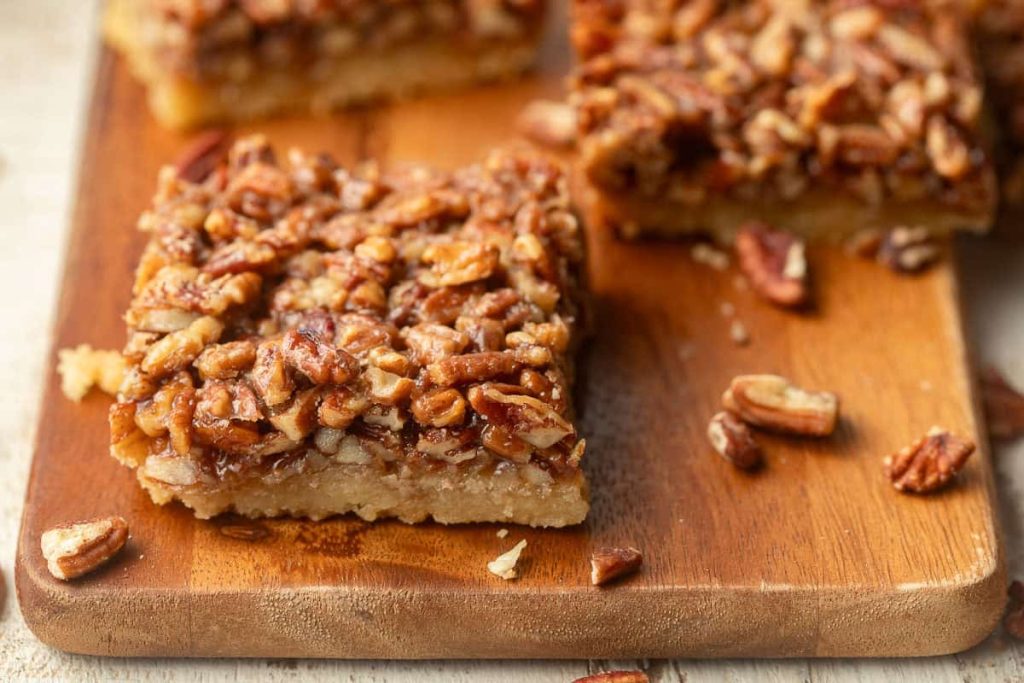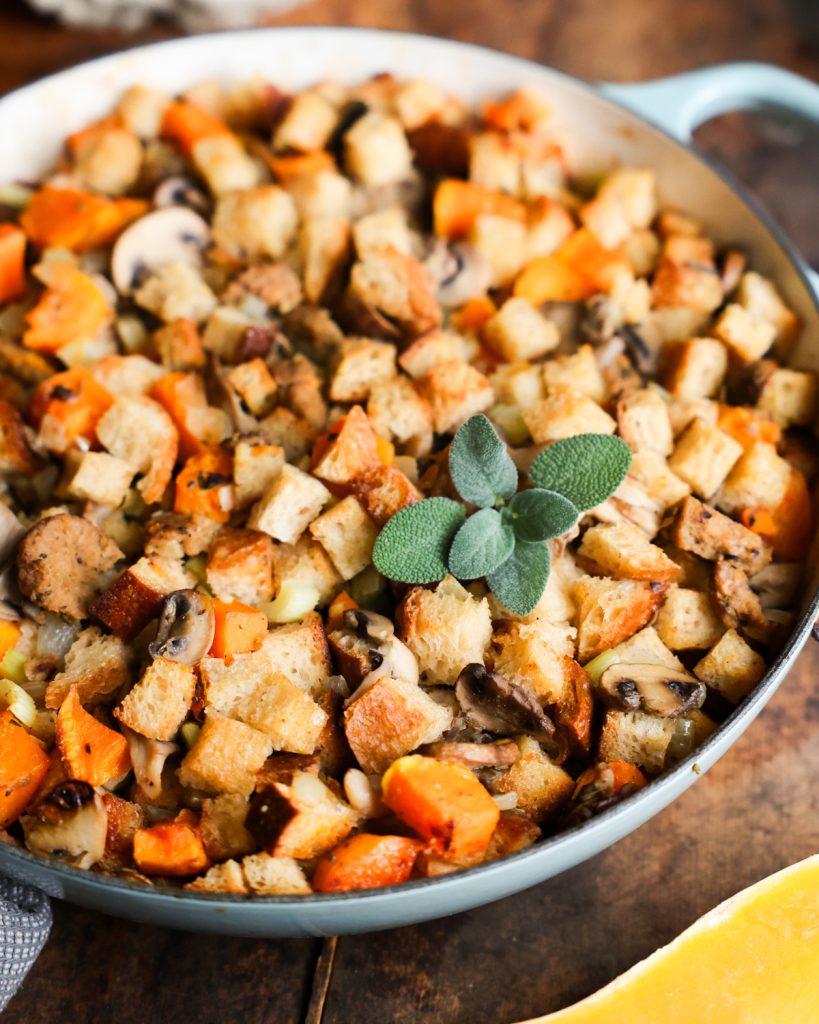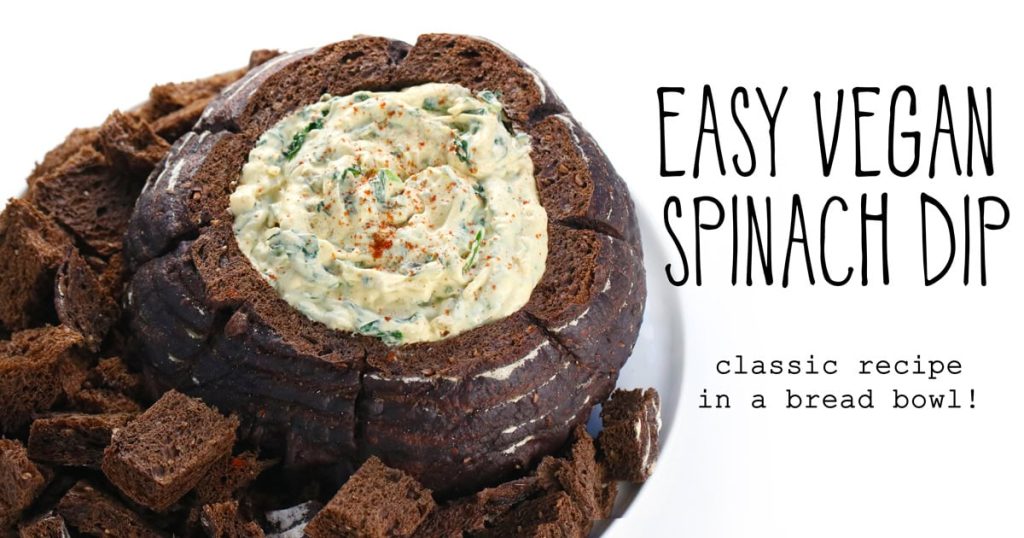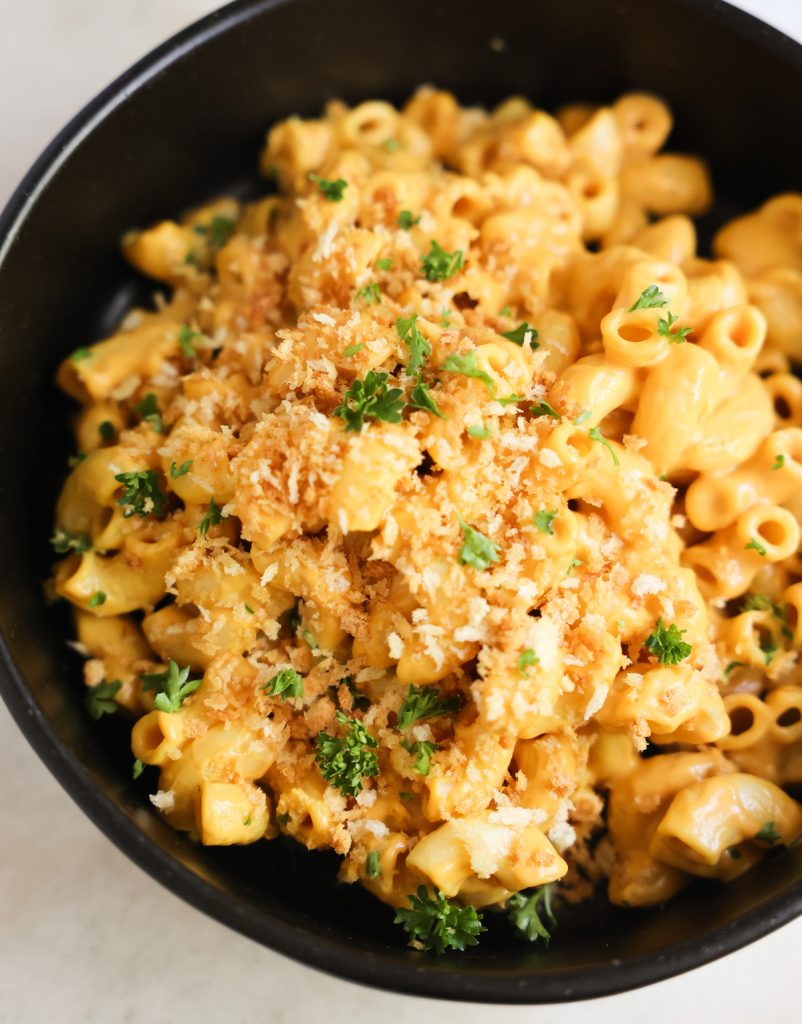
This Vegan Butternut Squash Mac and Cheese is a comforting, healthy twist on a quintessential soul food favorite. Creamy, cheesy, and entirely plant-based, this dish combines roasted butternut squash’s rich, luxurious flavors with a velvety cheese sauce that will satisfy vegans and non-vegans alike!
This recipe was written on April 18, 2016. It was updated with additional recipe information on July 10, 2024.
Indulge in a wholesome, plant-based version of a classic comfort dish with this irresistible vegan mac and cheese! Made with a rich, creamy sauce from roasted butternut squash and garlic, lots of nutritional yeast, and arrowroot to make it extra thick and luscious, this dish has all the cheesy goodness without any dairy. You get the rich, carby essence of traditional mac and cheese with better-for-you ingredients. What’s not to like?!
This is easily one of my favorite vegan squash recipes and only takes 30 minutes of prep work! Then everything bakes in the oven until golden, crispy, cheesy perfection. Enjoy this gourmet-tasting mac and cheese for weeknight dinners or to impress your guests at group gatherings.
For more easy vegan pasta dishes, try my Avocado Pesto Pasta, Arrabbiata Pasta, or Spring Veggie Pasta.

Ingredients
Butternut Squash: This vibrant orange squash adds a natural sweetness and creamy texture to the dish once roasted. Look for a firm squash without any blemishes. For easier prep, use pre-cut butternut squash cubes from the grocery store.
Garlic: Adds dimensional and nutty undertones to the vegan macaroni and cheese sauce. Choose a fresh and smooth garlic clove for the best flavor.
Arrowroot Powder: A thickening agent for the cheese sauce that is also gluten-free. Substitute 1:1 with cornstarch if preferred.
Non-Dairy Milk: Choose your favorite plant-based milk, such as almond, soy, or oat, to provide a creamy base for the cheese sauce. Opt for an unsweetened variety to avoid added sugars and ensure a neutral flavor.
Grapeseed Oil: The higher smoke point is ideal for roasting the butternut squash and garlic and cooking the cheese sauce. If desired, use another neutral-flavored oil, like canola or melted vegan butter, for a creamier taste.
Dijon Mustard: Enhances the cheesy flavor with a tangy profile. Use a smooth blend of Dijon mustard to create a smooth sauce for the butternut squash vegan mac and cheese. For a more textured sauce, use whole-grain mustard.
Onion Powder: Adds depth of flavor without the heartier texture of raw onion. Adjust the quantity to taste.
Lemon Juice: Freshly squeezed lemon juice brightens the sauce with acidity that balances the richness of the vegan butternut mac and cheese. Use fresh lemon juice for the best flavor, but store-bought will work in a pinch.
Nutritional Yeast: Key to providing the dairy-free butternut squash mac and cheese with a cheesy flavor and adds nutritional value with B vitamins. Adjust the amount to taste based on the desired cheesiness.
Sea Salt: Fine sea salt enhances the flavors throughout the dish. Use sparingly and adjust to taste. Kosher salt or Himalayan pink salt can also be used as an alternative.
Macaroni Pasta: Traditionally-shaped elbow macaroni or a similar small-shaped pasta works best in this dish. Cook the noodles al dente for a firm texture that holds up to baking.
Panko Bread Crumbs: Though this ingredient is optional, toasted panko adds a delightful crunch to the mac & cheese.
Parsley: Garnish your finished mac and cheese with fresh parsley.
How to Make Vegan Butternut Squash Mac and Cheese
- Steam the Butternut Squash. Fit a large pot or Dutch oven with a steamer basket. Add 1 1/2 inches of water to the pot and bring it to a boil over medium-high heat. Add the butternut squash to the basket, cover, and steam for 15 minutes or until very tender.

- Prepare Arrowroot Paste. Whisk the arrowroot powder and ⅓ cup of the milk in a small mixing bowl until smooth. Set aside.
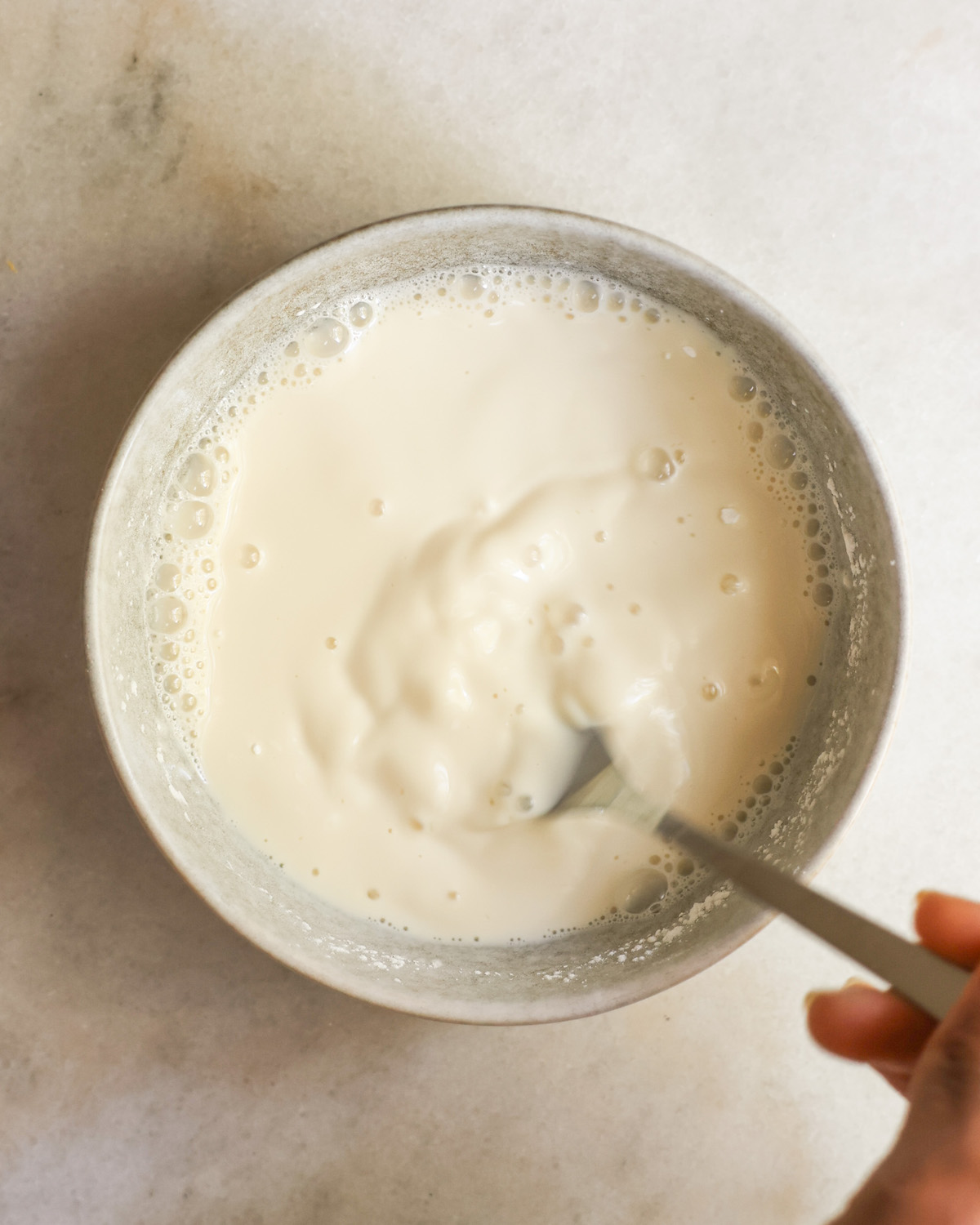
- Sauté Garlic. Warm a saucepan over medium heat on the stovetop. Add the oil or vegan butter and heat until melted. Add the minced garlic and saute for 1-2 minutes, until just golden brown.

- Prepare Cheese Sauce. Add the remaining soy milk, Dijon mustard, onion powder, lemon juice, nutritional yeast, and salt to the saucepan. Whisk to combine.
- Add Arrowroot Paste. Whisk the arrowroot milk mixture into the saucepan. Cook over medium-low heat, whisking regularly, for about 3 minutes or until thickened.

- Prepare Pasta. Cook the pasta according to the package directions until al dente or still slightly chewy. Drain the noodles well, then cool them in a deep baking dish.
- Blend Cheese Sauce. Transfer the sauce to a blender and add the butternut squash and roasted garlic. Blend until smooth and season with more nutritional yeast and salt to taste. The sauce should taste quite salty to balance the noodles.
- Combine Cheese Sauce & Noodles. Pour the cheese sauce over the noodles and stir well to coat.

Recipe Pro-Tips
- Evenly cut the butternut squash. Cut the butternut squash into even-sized cubes to ensure uniform roasting. If you’re short on time, many stores offer pre-cut butternut squash.
- Optional: Roast the butternut squash. Roasted squash instead of steamed squash provides a more naturally sweet, caramelized finish to the cheese sauce! Toss the cubed squash with 1 tablespoon of oil and roast in an oven preheated to 375°F for 30 minutes or until golden brown and tender.
- Thoroughly blend the cheese sauce. Use a high-speed blender or food processor to blend the roasted butternut squash and garlic with the cheese sauce. This will create a silky-smooth texture and creamy consistency.
- Properly cook the pasta. Heavily salt the pasta water to enhance the flavor of the noodles, and cook the pasta until al dente. The noodles will continue to cook slightly when baked, so cooking until just firm will prevent mushiness.
- Adjust seasonings to taste. Feel free to add more nutritional yeast, salt, and other spices to suit your preferences. The cheese sauce should be slightly saltier than you think, as the pasta will absorb some of it.

Recipe Variations
Below are optional variations to switch up this butternut mac and cheese vegan recipe:
- Gluten-Free: Use a small-sized gluten-free pasta shape and ensure the arrowroot powder or cornstarch is certified gluten-free.
- Spicy Kick: Add more red chili flakes or mix in a diced jalapeño pepper to the sauce for an extra spicy version.
- Herbs: Include fresh or dried herbs such as thyme, rosemary, or sage in the sauce for a more aromatic and flavorful dish.
- Greens: Add sautéed spinach, kale, or Swiss chard to the pasta for added nutrients and a pop of vibrant green color.
- Protein Boost: Incorporate cooked lentils, chickpeas, or crumbled tofu into the pasta to add more protein.
- Creamy Cauliflower: To make a lighter yet still creamy sauce, substitute half of the butternut squash with roasted cauliflower.
Serving Suggestions
This luxurious mac and cheese makes the perfect main dish for family dinners, a crowd-pleasing addition to potlucks, or a hearty side dish. Pair it with some of our favorite recipes below for a full-spread meal:
Storage Directions
- Refrigeration: Allow the butternut squash mac and cheese vegan dish to cool completely to room temperature before transferring it to an airtight container and storing it in the refrigerator for up to 3 days.
- Freezing: Leftovers can be frozen in a freezer-safe container for up to 3 months. Defrost it overnight in the refrigerator or until thawed.
- Reheating: Reheat leftovers in the oven at 350ºF until warmed through or in the microwave, stirring occasionally.

Frequently Asked Questions
Yes, simply assemble the dish as outlined, cover it with plastic wrap or aluminum foil, and refrigerate for up to 24 hours before baking. When ready to bake, add 5-10 minutes to the baking time to ensure it properly heats through.
Nutritional yeast is key to a cheesy flavor in these butternut squash vegan recipes, but you can also use a vegan cheese alternative. Note that the taste and texture may differ slightly.
More Vegan Pasta recipes
Recipe Card
- 2 cups cubed butternut squash, cut into 1 1/2-inch cubes
- 1/2 cup panko bread crumbs, *optional step
- 1 clove garlic, minced
- 2 tbsp arrowroot powder, or cornstarch
- 1 cup unsweetened plain non-dairy milk, such as soy, oat, or almond milk
- 1 tbsp grapeseed oil, canola oil, or vegan butter (such as Earth Balance)
- 3 tsp smooth Dijon mustard
- 1 tsp onion powder
- 1 tbsp fresh lemon juice
- 1 cup nutritional yeast
- 1 ½ tsp sea salt
- 8 oz macaroni pasta, 1/2 pack of pasta, or another small-shaped pasta such as shells, wagon wheels, or cavatappi
- 1/4 cup fresh parsley, minced
Prevent your screen from going dark
Fit a large pot or Dutch oven with a steamer basket. Add 1 1/2 inches of water to the pot and bring it to a boil over medium-high heat. Add the butternut squash to the basket, cover, and steam for 15 minutes or until very tender.
Preheat oven or toaster oven to 350°. Pour the panko bread crumbs into a baking dish, and toast for 7 minutes, or until golden. Set aside for topping the finished mac & cheese.
Whisk the arrowroot powder and 1/3 cup of the milk in a small mixing bowl until smooth. Set aside.
Warm a saucepan over medium heat. Add the oil or vegan butter and heat until melted. Add the minced garlic and sauté for 1-2 minutes, until just golden.
Add the remaining soy milk, Dijon mustard, onion powder, lemon juice, nutritional yeast, and salt to the saucepan. Whisk to combine.
Whisk the arrowroot milk mixture into the saucepan. Cook over medium-low heat, whisking regularly, for 3 minutes or until thickened.
Cook the pasta following the package directions until al dente, or still slightly chewy. Drain the noodles.
Transfer the sauce to a blender and add the butternut squash. Blend until smooth and season with more nutritional yeast and salt to taste. The sauce should be pretty salty to balance the noodles.
Pour the cheese sauce over the noodles and stir well to coat. Enjoy hot!
Garnish with the toasted panko bread crumbs and fresh parsley.
- Refrigeration: Allow the butternut squash mac and cheese vegan dish to cool completely to room temperature before transferring it to an airtight container and storing it in the refrigerator for up to 3 days.
- Freezing: Leftovers can be frozen in a freezer-safe container for up to 3 months. Defrost it overnight in the refrigerator or until thawed.
- Reheating: Reheat leftovers in the oven at 350ºF until warmed through or in the microwave, stirring occasionally.
- Optional: Roast the butternut squash. Enjoy a more naturally sweet, caramelized finish to the cheese sauce by using roasted squash instead of steamed! Toss the cubed squash with 1 tablespoon of oil and roast in an oven preheated to 375°F for 30 minutes or until golden brown and tender.
- Thoroughly blend the cheese sauce. Use a high-speed blender or food processor to blend the roasted butternut squash and garlic with the cheese sauce. This will create a silky-smooth texture and creamy consistency.
- Properly cook the pasta. Heavily salt the pasta water to enhance the flavor of the noodles, and cook the pasta until al dente. The noodles will continue to cook slightly when baked, so cooking until just firm will prevent mushiness.
- Adjust seasonings to taste. Feel free to add more nutritional yeast, salt, and other spices to suit your preferences. The cheese sauce should be slightly saltier than you think, as the pasta will absorb some of it.
3.4.3177
Source link
